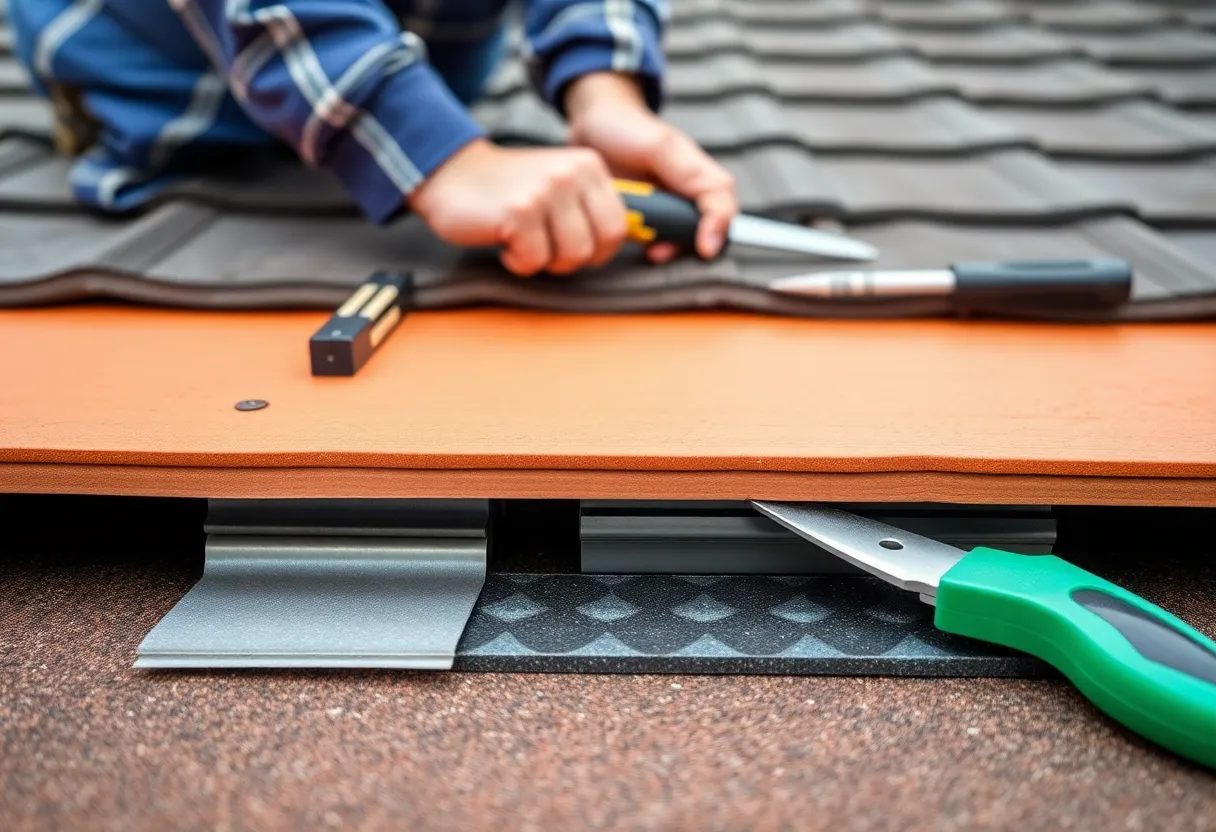

Follow this guide for a successful roof flashing installation.
Article Sponsored by:
Mays Contracting is more than just a roofing company; it’s a family legacy built on trust and quality. Founded in 1979, we’ve been serving the community for over four decades. Our story began with a simple vision: to provide exceptional roofing services for both residential and commercial properties. This vision has guided us ever since, as we’ve grown from a small, family-run operation to a trusted name in the industry.
Roof flashing is a critical component of roofing systems, designed to prevent water from penetrating your home. Properly installing roof flashing is essential for ensuring long-lasting protection against leaks and water damage. This beginner’s guide will walk you through the steps of successfully installing roof flashing, ensuring your home remains safe and dry.
What exactly is roof flashing? It is a thin material, typically made of metal or plastic, that directs water away from critical areas of your roof. Vulnerable points such as chimneys, vents, and roof valleys require flashing to keep water from seeping underneath shingles and causing damage.
There are various types of roof flashing, each serving specific purposes. Here are the most common types:
Before starting the installation process, gather the necessary tools and materials:
Like any construction project, preparation is vital for a successful installation. Follow these steps:
Conduct a thorough inspection of your roof to identify the areas where flashing is necessary. Look for any signs of damage, such as cracked shingles or rusted areas, that may need attention before installation.
Measure the required lengths for flashing at each vulnerable area. Use a utility knife to cut the flashing material to the correct length. Always ensure that the cut is straight for optimal fitting.
Clean the installation area thoroughly. Remove any debris, old sealant, or other materials that may hinder proper adhesion.
Once preparations are complete, it’s time to install the flashing. Follow these detailed steps:
If using step flashing, begin by placing the first piece at the bottom edge where the roof meets the wall. Nail it into place, ensuring it overlaps the lower shingles. Continue installing the remaining pieces, overlapping each new piece over the previous one to direct water away from the wall.
For continuous flashing, position it along the chimney or vertical wall. Ensure the flashing extends at least 6 inches past the chimney on both sides. Secure it with nails and apply roofing adhesive to help ensure it’s watertight.
When installing valley flashing, ensure that it aligns with the valleys of two intersecting roof planes. Secure the flashing with nails and ensure it is installed beneath the shingles for maximum water protection.
For vent pipe flashing, slide it around the vent pipe and secure it with nails. Make sure the top edge of the flashing is under the shingles to block any water intrusion. Apply sealant around the base to create an airtight seal.
After all pieces are in place, it is crucial to apply roofing sealant to the edges and seams of the flashing. This will help prevent any potential leaks by ensuring a watertight seal.
After installation, take the time to inspect everything carefully. Verify that:
Dispose of any scraps or debris from your work area. A clean workspace not only looks better but also helps prevent accidents.
Regular maintenance and inspection of your roof flashing are essential to prolong its lifespan. Check for:
Successfully installing roof flashing is a skill that can help homeowners protect their homes from water damage. By following the steps outlined in this guide, you can ensure a proper installation. While it may seem daunting for a beginner, proper preparation, execution, and maintenance will lead to long-lasting results. Always remember that investing time in proper installation today will save considerable effort and expense in preventing water damage in the future.

Quality Roof Construction and Repair in Lexington, Richland, Newberry and Laurens Counties for over 40 Years.
News Summary The South Carolina Senate has voted 33-8 to remove Treasurer Curtis Loftis from…
News Summary South Carolina is facing a severe wildfire crisis, prompting Governor Henry McMaster to…
News Summary A tragic accident on Interstate 95 in South Carolina led to the deaths…
News Summary South Carolina is gearing up for Small Business Saturday on November 30, with…
News Summary Verizon Business has secured a contract to be the primary wireless communications provider…
News Summary South Carolina has received $1.5 million in grants for infrastructure enhancements in Dorchester…